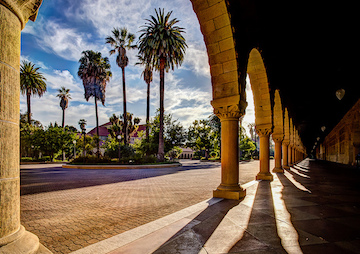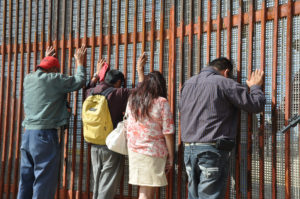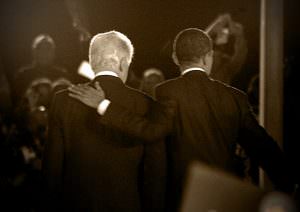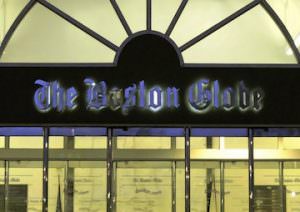Will the Millennial Movement Rebuild the Ivory Tower or Be Crushed by It?
College administrators tend to shine bright lights on the politics of student protesters that can be absorbed into the system's business model, while ignoring or downplaying students' more structural or economically challenging demands. The Stanford University campus in California. (Robbie Shade / CC-BY-2.0)
1
2
3
The Stanford University campus in California. (Robbie Shade / CC-BY-2.0)
1
2
3
In this context, universities are scrambling to accommodate student activism for racial justice by incorporating the more individualized and personal side of it into increasingly depoliticized cultural studies programs and business-friendly, market-oriented academic ways of thinking. Not surprisingly, how today’s students frame their demands often reflects the environment in which they are being raised and educated. Postmodern theory, an approach which still reigns in so many liberal arts programs, encourages textual analysis that reveals hidden assumptions encoded in words; psychology has popularized the importance of individual trauma; and the neoliberal ideology that has come to permeate so many schools emphasizes individual behavior as the most important agent for social change. Add together these three strands of thought, now deeply embedded in a college education, and injustice becomes a matter of the wrongs individuals inflict on others at a deeply personal level. Deemphasized are the policies and structures that are built into how society (and the university) works.
For this reason, while schools have downplayed or ignored student demands for changes in admissions, tuition, union rights, pay scales, and management prerogatives, they have jumped into the heated debate the student movement has launched over “microaggressions” — pervasive, stereotypical remarks that assume whiteness as a norm and exoticize people of color, while taking for granted the white nature of institutions of higher learning. As part of the present wave of protest, students of color have, for instance, highlighted their daily experiences of casual and everyday racism — statements or questions like “where are you from?” (when the answer is: the same place you’re from) or “as a [fill in the blank], how do you feel about…” Student protests against such comments, especially when they are made by professors or school administrators, and the mindsets that go with them are precisely what the right is apt to dismiss as political correctness run wild and university administrations are embracing as the essence of the present on-campus movement.
At Yale, the Intercultural Affairs Committee advised students to avoid racially offensive Halloween costumes. When a faculty member and resident house adviser circulated an email critiquing the paternalism of such an administrative mandate, student protests erupted calling for her removal. While Yale declined to remove her from her post as a house adviser, she stepped down from her teaching position. At Emory, students protested the “pain” they experienced at seeing “Trump 2016” graffiti on campus, and the university president assured them that he “heard [their] message… about values regarding diversity and respect that clash with Emory’s own.” Administrators are scrambling to implement new diversity initiatives and on-campus training programs — and hiring expensive private consulting firms to help them do so.
At the University of Missouri, the president and chancellor both resigned in the face of student protests including a hunger strike and a football team game boycott in the wake of racial incidents on campus including public racist slurs and symbols. So did the dean of students at Claremont McKenna College (CMC), when protest erupted over her reference to students (implicitly of color) who “don’t fit our CMC mold.”
Historian and activist Robin Kelley suggests that today’s protests, even as they “push for measures that would make campuses more hospitable to students of color: greater diversity, inclusion, safety, and affordability,” operate under a contradictory logic that is seldom articulated. To what extent, he wonders, does the student goal of “leaning in” and creating more spaces for people of color at the top of an unequal and unjust social order clash with the urge of the same protesters to challenge that unjust social order?
Kelley argues that the language of “trauma” and mental health that has come to dominate campuses also works to individualize and depoliticize the very idea of racial oppression. The words “trauma, PTSD, micro-aggression, and triggers,” he points out, “have virtually replaced oppression, repression, and subjugation.” He explains that, “while trauma can be an entrance into activism, it is not in itself a destination and may even trick activists into adopting the language of the neoliberal institutions they are at pains to reject.” This is why, he adds, for university administrators, diversity and cultural competency initiatives have become go-to solutions that “shift race from the public sphere into the psyche” and strip the present round of demonstrations of some of their power.
Cultural Politics and Inequality
In recent years, cultural, or identity, politics has certainly challenged the ways that Marxist and other old and new left organizations of the past managed to ignore, or even help reproduce, racial and gender inequalities. It has questioned the value of class-only or class-first analysis on subjects as wide-ranging as the Cuban Revolution — did it successfully address racial inequality as it redistributed resources to the poor, or did it repress black identity by privileging class analysis? — and the Bernie Sanders campaign — will his social programs aimed at reducing economic inequality alleviate racial inequality by helping the poor, or will his class-based project leave the issue of racial inequality in the lurch? In other words, the question of whether a political project aimed at attacking the structures of economic inequality can also advance racial and gender equality is crucial to today’s campus politics.
Put another way, the question is: How political is the personal? Political scientist Adolph Reed argues that if class is left out, race politics on campus becomes “the politics of the left-wing of neoliberalism.” As he puts it, race-first politics of the sort being pushed today by university administrators promotes a “moral economy… in which 1% of the population controlled 90% of the resources could be just, provided that roughly 12% of the 1% were black, 12% were Latino, 50% were women, and whatever the appropriate proportions were LGBT people.”
The student movement that has swept across the nation has challenged colleges and universities on the basics of their way of (quite literally) doing business. The question for these institutions now is: Can student demands largely be tamed and embedded inside an administration-sanctioned agenda that in no way undermines how schools now operate in the world?
Your support matters…Independent journalism is under threat and overshadowed by heavily funded mainstream media.
You can help level the playing field. Become a member.
Your tax-deductible contribution keeps us digging beneath the headlines to give you thought-provoking, investigative reporting and analysis that unearths what's really happening- without compromise.
Give today to support our courageous, independent journalists.





You need to be a supporter to comment.
There are currently no responses to this article.
Be the first to respond.